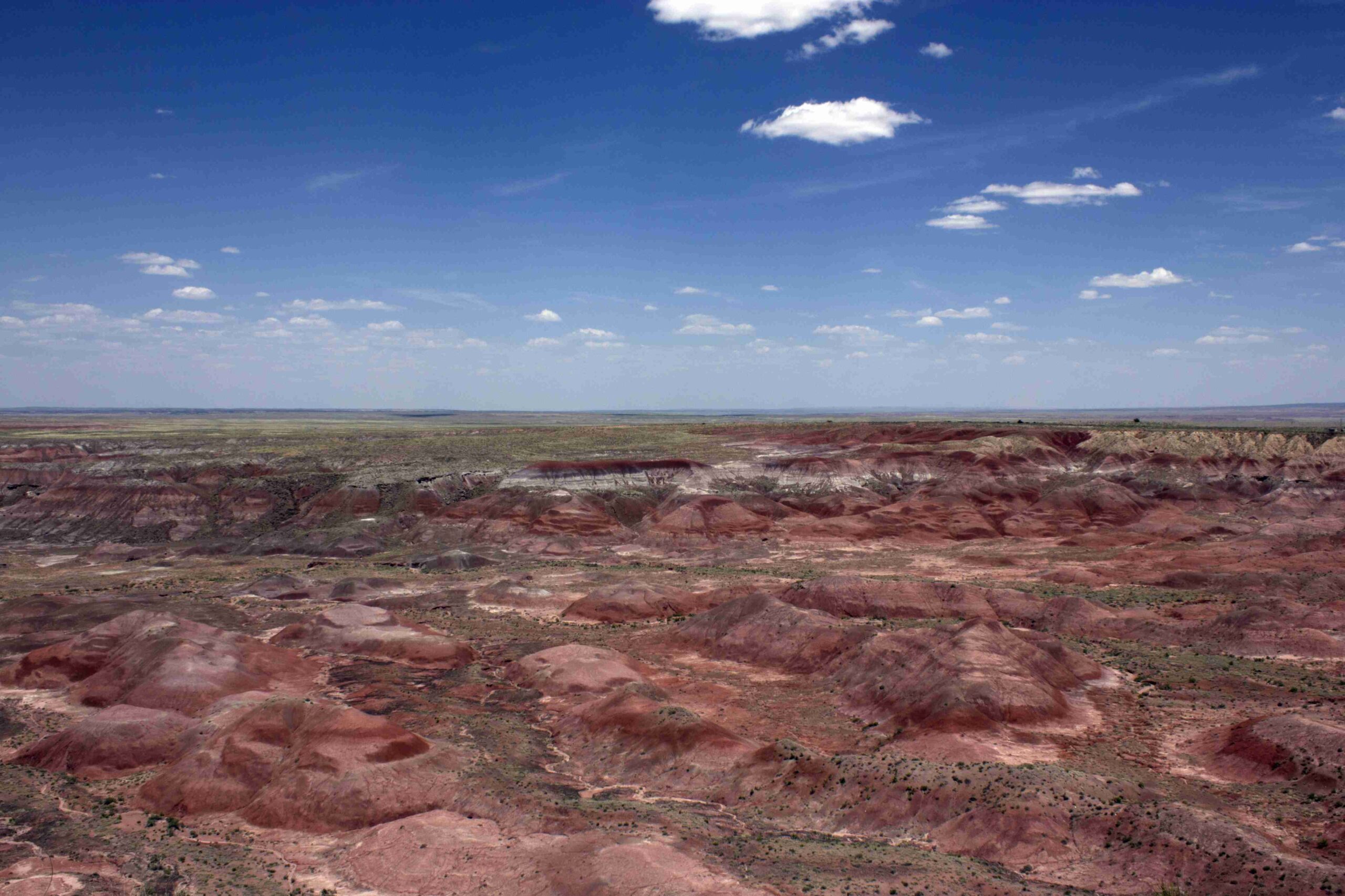Petrified Forest National Park is home to a diverse array of animal species adapted to its arid environment. From mammals like mule deer and pronghorn antelope to birds such as ravens and red-tailed hawks, the park hosts a rich ecosystem. Reptiles, including various lizards and snakes, thrive in the harsh desert conditions. The park’s unique habitats, from riparian areas to grasslands, support a wide range of wildlife, offering visitors opportunities to observe these native species in their natural settings.
What Mammals Can Be Found in Petrified Forest National Park?

The park is home to a variety of mammalian species, each adapted to the challenging desert environment:
- Mule deer
- Pronghorn antelope
- Coyotes
- Bobcats
- Badgers
- Striped skunks
- Black-tailed jackrabbits
- Desert cottontails
Several endangered species also inhabit the park:
- Deer Mouse
- Swift fox
- Townsend’s big-eared bat
- Antelope squirrel
- Ground squirrel
These mammals have developed unique adaptations to survive in the arid climate. For instance, the black-tailed jackrabbit’s long ears serve as natural radiators, helping to cool the animal during hot summer days.
Which Bird Species Call the Park Home?

Petrified Forest National Park is a haven for bird enthusiasts, with numerous species residing in or migrating through the area:
- Ravens
- Red-tailed hawks
- Turkey vultures
- Western tanagers
- Hermit warblers
- Avocets
- Great Blue herons
- Green-backed herons
- Black-crowned Night herons
The park’s diverse habitats, particularly the riparian areas along the Puerco River, attract a wide variety of bird species. These areas provide cooler, more humid environments that are especially appealing to birds in the otherwise arid landscape.
What Reptiles and Amphibians Thrive in the Park’s Harsh Environment?
Despite the challenging conditions, Petrified Forest National Park supports a surprising diversity of reptiles and amphibians:
Reptiles:
- Collared lizard
- Glossy snake
- Prairie rattlesnake
- Nightsnake
- Common kingsnake
- Milksnake
- Gopher snake
Amphibians:
- Mexican spadefoot toads
- Plains spadefoot toads
- Tiger salamanders
These cold-blooded creatures play a crucial role in the park’s ecosystem, helping to control insect populations and serving as prey for larger animals.
How Have the Park’s Animals Adapted to Desert Life?
The animals native to Petrified Forest National Park have developed remarkable adaptations to thrive in the desert environment:
- Physical Adaptations:
- Hollow hairs for insulation (mammals)
- Large ears for heat regulation (e.g., jackrabbits)
-
Water-conserving physiologies
-
Behavioral Adaptations:
- Burrowing to escape extreme temperatures
- Activity during cooler parts of the day (crepuscular behavior)
-
Seasonal migration or hibernation
-
Ecological Roles:
- Reptiles control insect and small mammal populations
- Larger predators maintain balance in prey species
These adaptations allow the park’s fauna to survive and thrive in an environment that might seem inhospitable at first glance.
When and Where Are the Best Wildlife Viewing Opportunities?
To maximize your chances of spotting animals native to the Petrified Forest National Park, consider the following tips:
| Time of Day | Best Locations | Seasonal Considerations |
|---|---|---|
| Early morning | Riparian areas along Puerco River | Spring and summer offer increased activity |
| Late evening | Grasslands | Winter may require more patience |
| Any time | Driving through the park | Avoid midday heat in summer |
For optimal viewing:
– Visit during spring or summer when flora is in bloom and animals are more active
– Bring binoculars and a field guide
– Move quietly and respect wildlife habitats
What Tours and Activities Are Available for Wildlife Observation?
While specific tour details may vary, the park offers several options for wildlife enthusiasts:
- Guided Tours:
- Educational programs led by park rangers
-
Focus on wildlife identification and habitat information
-
Self-Guided Exploration:
- Use park-provided bird lists and informational handouts
-
Follow designated trails and viewing areas
-
Accessibility:
- Many areas accessible by car or on foot
- Visitor centers offer resources and up-to-date wildlife sighting information
Remember to check with park staff for current program schedules and any seasonal wildlife viewing recommendations.
Petrified Forest National Park offers a unique opportunity to observe a diverse array of desert-adapted wildlife. From the elusive swift fox to the majestic red-tailed hawk, the park’s animals showcase the resilience and diversity of life in arid environments. Whether you’re an avid birder, a reptile enthusiast, or simply curious about desert ecology, the park’s native fauna provides endless fascination and learning opportunities.
References:
1. Wildlife At Petrified Forest National Park
2. Animals – Petrified Forest National Park
3. Petrified Forest – NPS History

